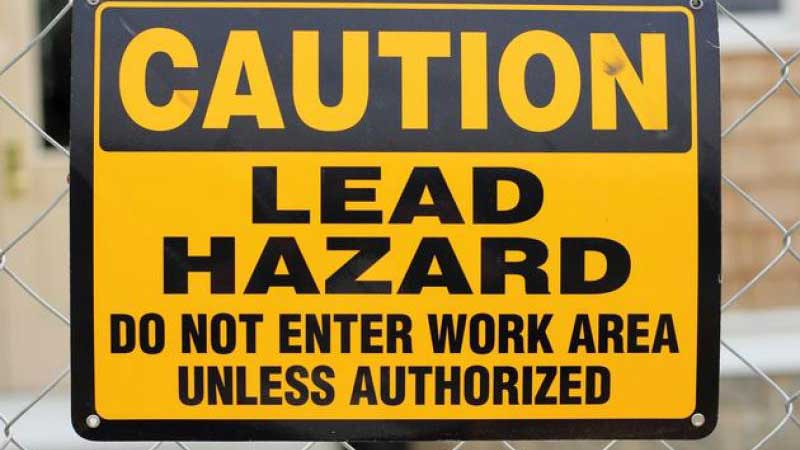
As Kenya joins the global community this week in marking the 6th Lead Poisoning Prevention Week of Action it is vital to fully implement the recently-enacted regulations restricting the use of lead in paints to avoid the devastating impacts of the heavy metal to human and environmental health.
Lead and its compounds are used widely in the manufacturing of various types of paint in the country since the chemical gives the product brilliant colours, prevents rusting on the painted metal surfaces and makes oil-based paint dry faster and more evenly.
However, Lead is a cumulative and persistent toxicant affecting practically every system within the human body, particularly the intellectual development and wellbeing of children resulting in significant learning challenges.
Where to find it
Freshly painted surfaces, with lead-based paint, are not immediate sources of lead exposure. However, over time, these surfaces deteriorate, peel off and become airborne thus spreading toxic contamination. Paint works that involve sanding and welding may also contribute to these exposures.
Lead in paint was identified as one of the emerging policy issues during the second International Conference on Chemicals Management (ICCM) in 2009.
The ICCM launched the Global Alliance to Eliminate Lead in Paint as a voluntary partnership that is jointly led by the World Health Organization (WHO) and UN Environment (UNEP) in order to protect human health and the environment.
The goal of Lead Paint Alliance is to focus and catalyse the efforts of diverse stakeholders in order to prevent exposure of children and to minimize occupational exposure to lead paint.
The overall objective is to establish legal limits and phase out lead in paint by the year 2020, and eventually eliminate the associated risks.
This undertaking is comparable to the previous joint international efforts that encouraged national regulatory actions to phase out leaded fuel.
It is for this reason that since 2013, the International Lead Poisoning Prevention Week of Action takes place annually on the last week of October to encourage governments to enforce national legal limits on lead in paint and to encourage industries to stop the manufacture and sale of lead paint.
It also raises awareness of the health and environmental risks posed by lead paint, to prompt actions by governments and manufacturers to stop the production and sale of lead paints.
In Kenya, the issues of lead paint came into public limelight in 2013 with strong collaboration and participation of Lead Paint Alliance partners, policy makers, regulators, researchers, academia, diverse media, and consumer networks among other key stakeholders.
Industry efforts
Stay informed. Subscribe to our newsletter
Paint manufacturing industries have been largely supportive and since then, measurable levels of progress and commitments have been made towards establishing legal limits to phase out lead in all paints.
The Technical Committee of the Kenya Bureau of Standards (Kebs) that includes local paint manufacturers recently developed a permissive limit of 90 parts per million (ppm) total lead content in paint.
Kenya now joins the rest of the world with this legal limit to regulate all paints. It also restricts the supply of leaded materials since Kenya is an open market economy and imports synthetic chemicals to manufacture paints.
Similar efforts have been directed towards harmonization of the East African lead standard. The EA draft standards are currently open for public review by KEBs within 60 days.
The most effective way of phasing out lead in paint is by enforcing the established lead Standards to ensure that consumers use lead-free paints.
This week, a series of activities, including a one-day Road Show, by the Department of Chemistry of the University of Nairobi in collaboration with the UN Environment (UNEP) and paint manufacturers will advocate for lead free paint in respect of the newly developed National Lead Paint Standard that require enforcement. They will also demonstrate how paints are analysed in laboratory to determine levels of compliance.
It will also provide an opportunity to demonstrate the commitment of various sectors towards phasing out of lead in paint in Kenya and the region.
Dr Hussein is a Lecturer in the University of Nairobi’s Department of Chemistry and Member of Lead Paint Alliance Advisory Council and Chairlady of technical Committee for KEBS. [email protected]
 The Standard Group Plc is a
multi-media organization with investments in media platforms spanning newspaper
print operations, television, radio broadcasting, digital and online services. The
Standard Group is recognized as a leading multi-media house in Kenya with a key
influence in matters of national and international interest.
The Standard Group Plc is a
multi-media organization with investments in media platforms spanning newspaper
print operations, television, radio broadcasting, digital and online services. The
Standard Group is recognized as a leading multi-media house in Kenya with a key
influence in matters of national and international interest.
 The Standard Group Plc is a
multi-media organization with investments in media platforms spanning newspaper
print operations, television, radio broadcasting, digital and online services. The
Standard Group is recognized as a leading multi-media house in Kenya with a key
influence in matters of national and international interest.
The Standard Group Plc is a
multi-media organization with investments in media platforms spanning newspaper
print operations, television, radio broadcasting, digital and online services. The
Standard Group is recognized as a leading multi-media house in Kenya with a key
influence in matters of national and international interest.










